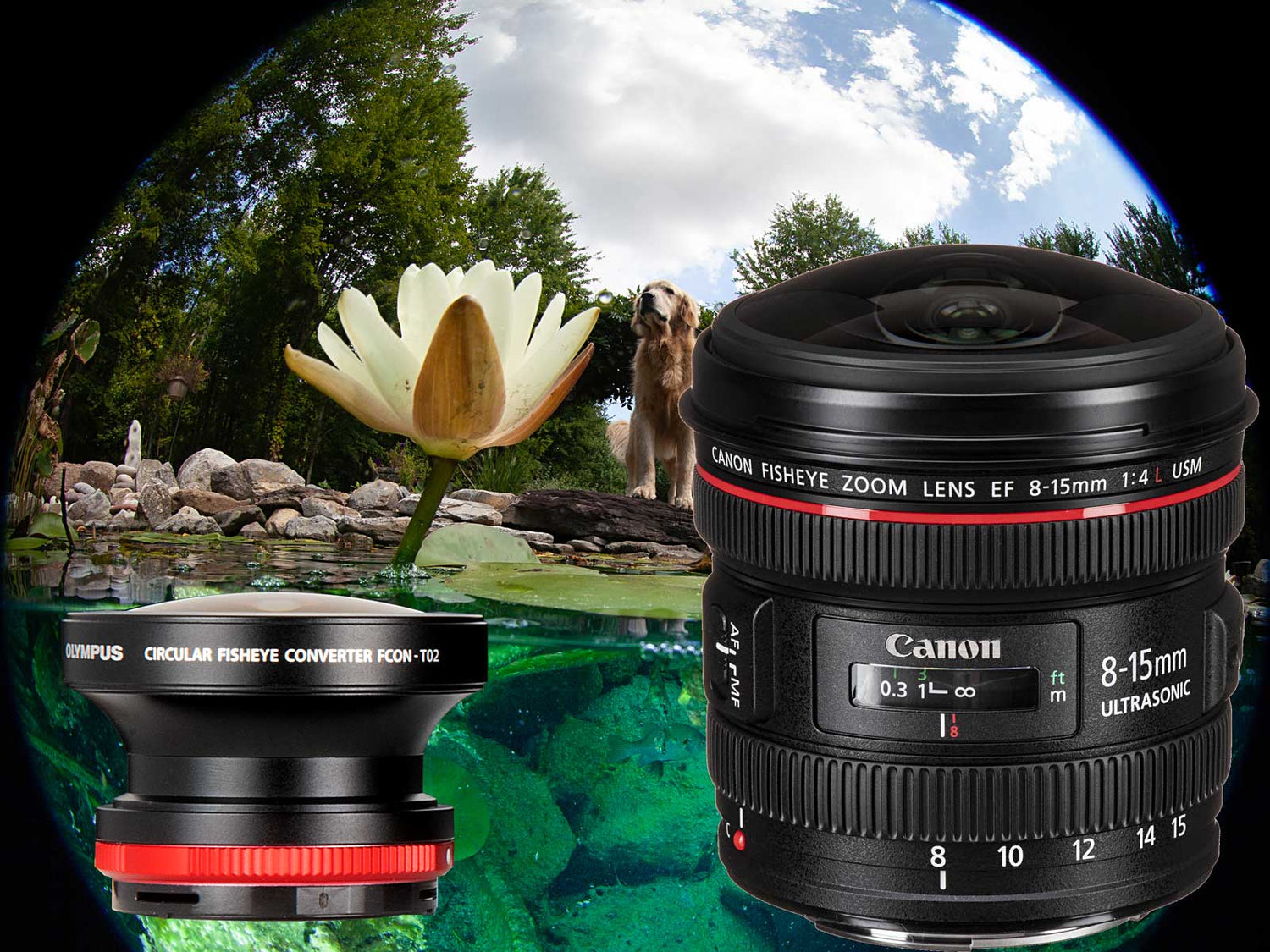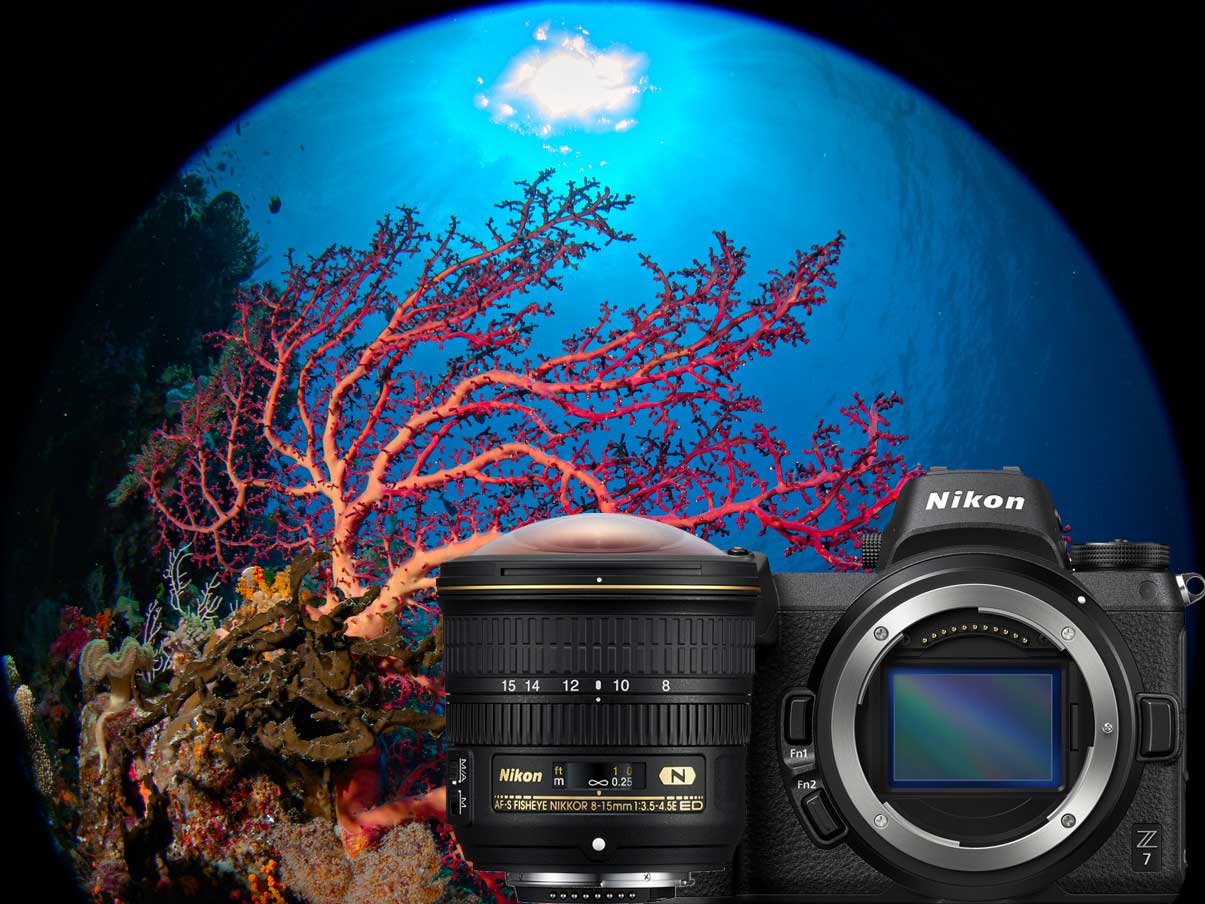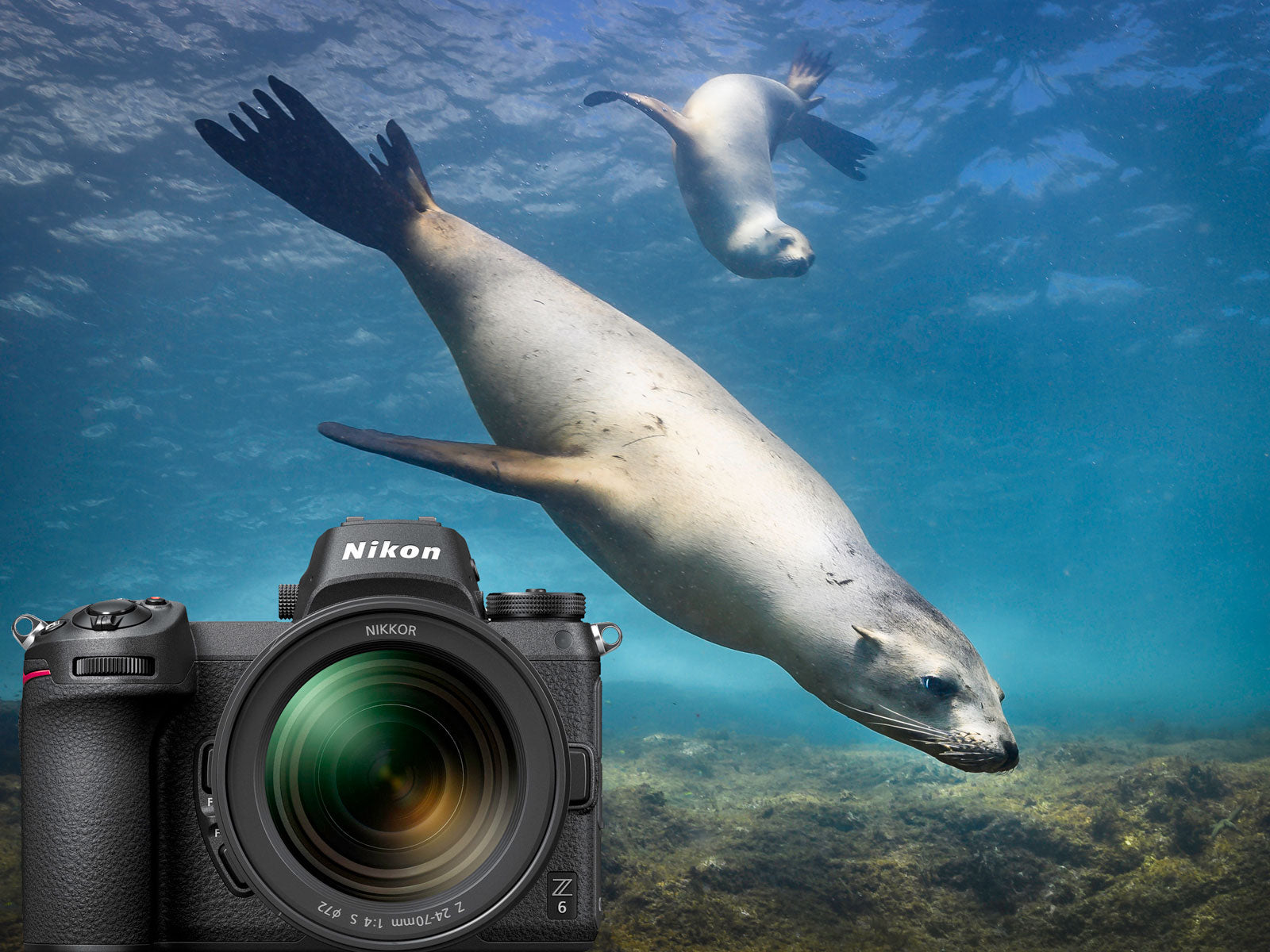By Jean Rydberg and Steve Miller
It's not every dive that you're deciding between picking up your full frame DSLR camera body or a pocket sized compact camera. But perhaps that dive will come, and if you're shooting the Olympus Tough TG-6 you probably won't be disappointed.
We dared to compare the Canon EF 8-15mm f/4L USM Fisheye with an Olympus Tough TG-6 camera fitted with FCON-T02 Fisheye Converter Lens and dome port. We didn't set it up for this test, but you could compare the Nikon 8-15mm Circular Fisheye on a D850 camera body if you're a Nikon shooter. Let's get right down to it.
The Set-Up
We wanted to test an over-under shot (half-in, half-out of the water), which is notoriously difficult for compact camera systems.
You can see from the light that we tested on a bright sunny day, and tried to make an image that was reproducible and wasn’t painful to look at. This scenario puts the Canon with it’s full frame sensor in a position to really shine, and sets the small TG-6 sensor at a disadvantage. This is due to the very wide tonal range of the entire scene (the difference in light value between the darkest darks and the brightest highlights). The sky is easily 6 stops brighter than the underwater portion of the image, so even after we light it with a DS161 these wide tonal ranges will challenge any camera.
Both images have been lightly processed in Adobe® Lightroom with a top-down gradient filter to bring back some detail in the sky. Bright skies in an image like this are really tough for any camera and lens combination.
Canon EF 8-15mm f/4L USM Fisheye
This is one of our absolute favorite lenses for shooting underwater. It was the world's first fisheye zoom lens to offer both "circular" and "full frame" images with a 180 degree field of view. It's super sharp above and below water. At $1,249 US it doesn't come cheap but good glass is the first best place to spend your money for great underwater images. This lens is also fairly compact and lightweight for travel which is something we can't say about some of the other popular wide angle full frame lenses.
Here's what we got:

Canon EF 8-15mm f/4L USM Fisheye on a Canon EOS 5D Mark II DSLR • ISO 160 • f/11 • 1/160
The Canon set to 8mm produces a round full frame image that is sharp everywhere, you can focus on a bubble on your dome port if you wish. Since the RAW files are so large, Lightroom can tone down the highlights and bring up the shadows as much as you like- this latitude is one of the things that make full frame sensors king.
Olympus FCON-T02 Fisheye Converter
This is a compact, waterproof lens that can be attached to the Olympus Tough TG-6 camera either above or below water. When combined with a dome port it's an amazing tool for split shots that have been previously impossible to capture with only the external wide angle lenses that are currently on the market. And unlike wet lenses designed for the front of a housing, this converter can be used with your camera for topside travel photos- think Machu Picchu or the Grand Canyon. You can zoom through the lens for close-focus wide angle without the circular frame.
Can we stop a second and emphasize how compact this set-up is? The lenses in the photo at the beginning of this article are approximately to scale. The TG-6 camera with housing, lens, and dome port weigh in at less than 2.5 lb (1.1 kg).
Here's what we got:

FCON-T02 Fisheye Converter on Olympus Tough TG-6 • ISO 400 • f/8 • 1/100
The Olympus camera does not have a manual mode, so we have to use some workarounds to get the camera to make the best exposure selections. This was shot in Aperture priority (A) mode with ISO capped at 400.
Shot seconds apart, the optical aspect of the lens is what we love in the Canon 8-15mm Fisheye: big and wide, with incredible depth of field. This perspective is indistinguishable from that of the more expensive system. There are differences to be found of course, as there should be- particularly in the extreme highlights and darks. You're missing the soft nuances of the flower's central petals and the top of the dog's head. There's a tiny bit more softness around the edges of the image but not much.
Interestingly it does not exhibit the blue fringing that you can see in the Canon image. This effect will come or go with either lens depending on the light angle.
Conclusion
The Olympus Tough series already rattles many DSLR and mirrorless systems with its amazing super macro performance in microscope mode. With the FCON-T02 and Dome Port, we think it's beginning to rival larger, more expensive cameras in wide angle performance as well. And a compact system has the major advantage of being so easy to set up, carry, and shoot.
Comparing the performance of a full frame Canon DSLR to an Olympus TG-6 is laughable... there are so many differences in the machines and not only what they do, but how they do it. In terms of the FCON-T02 lens itself, however, we call it scary good. You can judge for yourself!
Being in the right place at the right time with a camera in your hand is about 90% of the battle to get the perfect shot. Sometimes you may be tempted to (or even required to) leave your big rig behind, but a compact like this is a breeze to take along every time.
Products Used
Additional Reading
Building the Next Generation Backyard Underwater Photo Studio
RC1 TTL Receiver for DS Strobes & Olympus TG-5 Camera Review
Olympus Tough TG-5 Underwater Photos
How to Shoot Split Shots (Half-In, Half-Out of the Water)
Close Focus Wide Angle In Depth
Choosing Strobes for an Olympus Tough Housing













